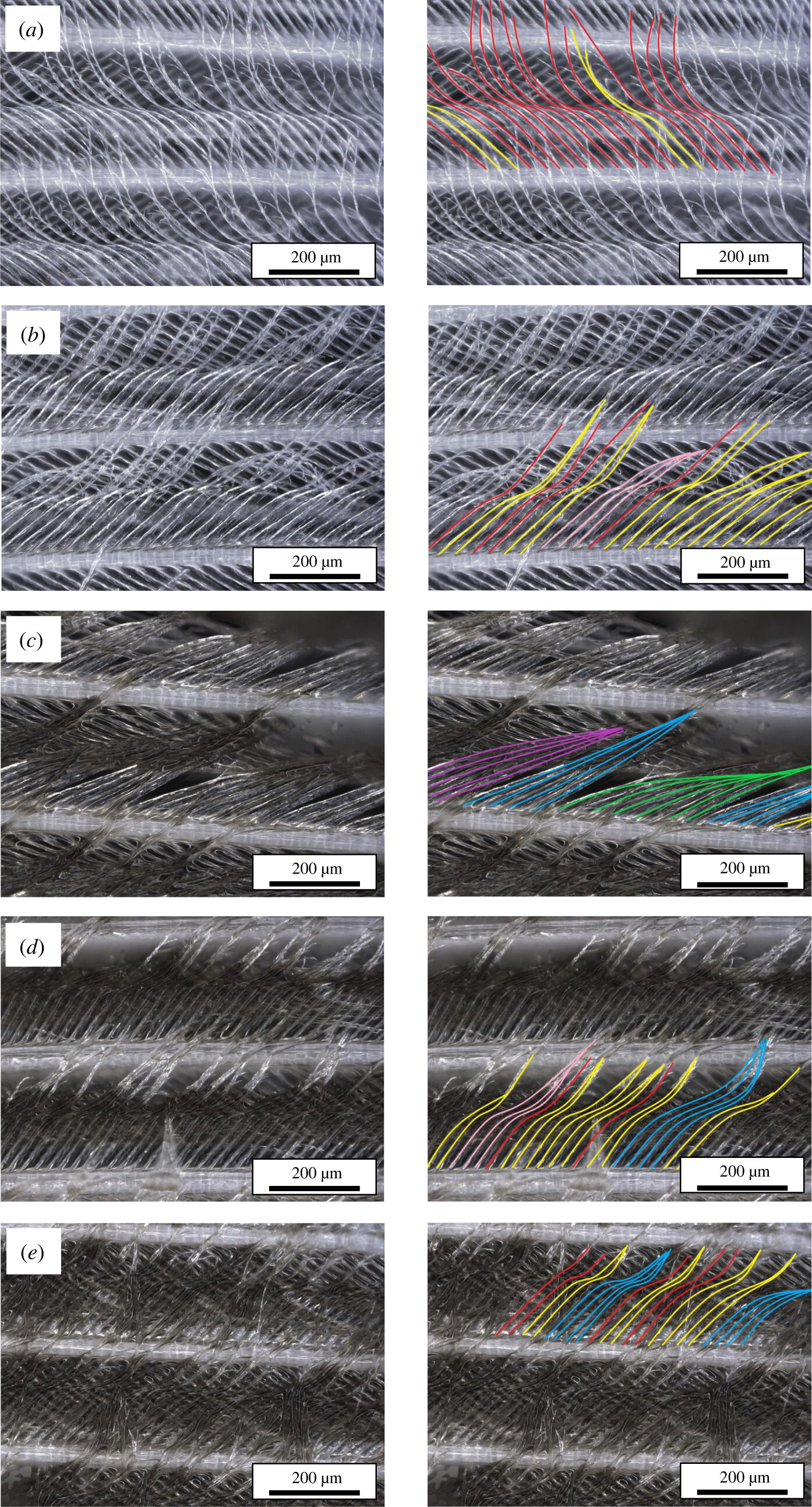 An image from the paper: Figure 4. Amalgamation annotation of Manx shearwater feathers. Left: the distribution of barbules along the barb at increasing levels of oil treatment. Oil treatments are (a) control, (b) trace colour sheen – 0.1 µm, (c) dark colour sheen – 3 µm, (d) standard slick – 25 µm, and (e) severe slick – 75 µm, (table 1). Right: amalgamation Index analysis has been marked to display spread/clumping reflected in mean AI calculations, with the following colours representing values determined for clump sizes: Red = 1, Yellow = 2, Pink = 3, Blue = 4, Purple = 5, Green = 6.
An image from the paper: Figure 4. Amalgamation annotation of Manx shearwater feathers. Left: the distribution of barbules along the barb at increasing levels of oil treatment. Oil treatments are (a) control, (b) trace colour sheen – 0.1 µm, (c) dark colour sheen – 3 µm, (d) standard slick – 25 µm, and (e) severe slick – 75 µm, (table 1). Right: amalgamation Index analysis has been marked to display spread/clumping reflected in mean AI calculations, with the following colours representing values determined for clump sizes: Red = 1, Yellow = 2, Pink = 3, Blue = 4, Purple = 5, Green = 6.
Emma Murphy (School of Biological, Earth & Environmental Sciences, University College Cork, Ireland) and colleagues have published open access in Royal Society Open Science on the effects of oil on Manx Shearwaters’ feather structure.
The paper’s abstract follows:
Oil pollution has profound negative impacts on the marine environment, with seabirds particularly vulnerable to oiling, due to the amount of time spent on the sea surface foraging or resting. Exposure to oil can affect feather structure and influence waterproofing, buoyancy and thermoregulation. We investigated the effects of surface crude oil on the feather structure of Manx shearwaters (Puffinus puffinus), a seabird species that spends a high proportion of time on the water surface. Sampled body contour feathers were exposed to varying thicknesses of surface crude oil before assessing their resistance to water permeation, increase in mass and clumping of feather barbules. Surface oil as thin as 0.1 µm was enough to increase feather permeability, while greatest impacts on permeability were caused by exposure to dark colour surface sheens 3 µm in thickness. Increases in feather mass of up to 1000% were noted in heavy oiling scenarios due to contact with thicker oil slicks, which may significantly affect wing loading and energetic expenditure.
REFERENCE
Murphy E., Jessopp M. and Darby J. (2022) Light to intermediate oil sheens increase Manx shearwater feather permeability. Royal Society Open Science. https://doi.org/10.1098/rsos.220488
24 October 2022

 English
English  Français
Français  Español
Español